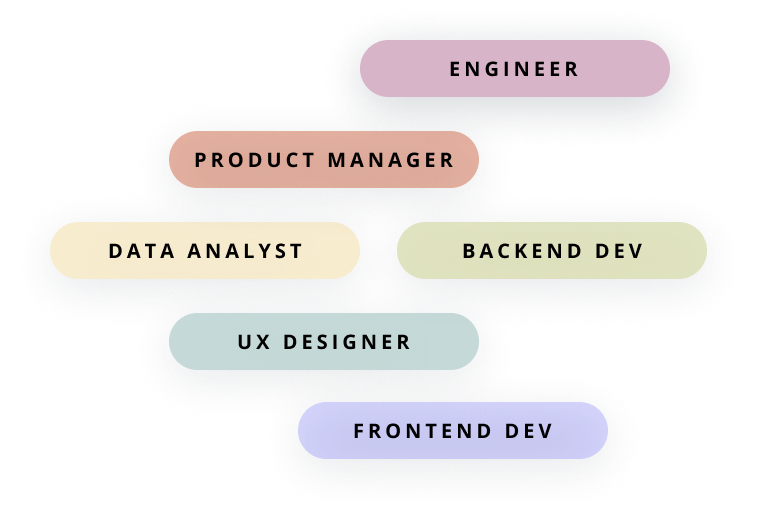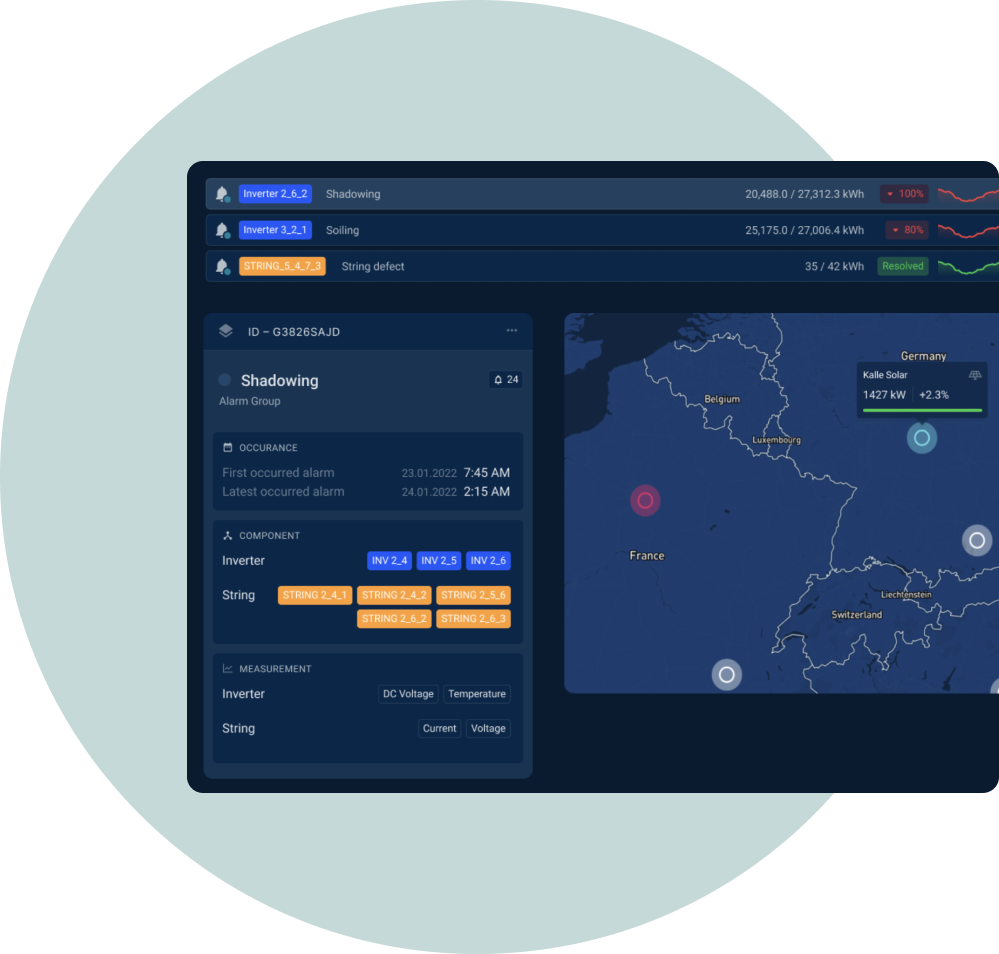Product. AI solar Management System
My role. Principal Product Manager
Market. Global
Driving digital transformation for an AI product
A platform in solar energy, aiming to change how the world manages renewable energy with the help of artificial intelligence (AI). Despite its innovative approach, the company faced significant challenges in making its technical product more user-friendly and scalable.
As the lead with a team of over three Product Managers and fifty contributors, my role was to guide us through this critical shift to digital. This case study will highlight the strategies and methods we used to overcome these challenges and successfully transform the company and product.

INITIATIVE 1
Establishing a unified company vision
When I first took on the role, I quickly realized the absence of a strategic focus. Departments operated in silos, leading to a disjointed company vision. My first task was to spearhead the development of a unified vision.
To address this issue, I convened strategic meetings involving team leaders, stakeholders, and development teams. The primary objective was to clearly define the company’s objectives. We revisited the business plan and re-evaluated our Unique Selling Proposition (USP). It became apparent that our dynamics were causing us to emulate our competitor, rather than differentiating ourselves.
We recognized the need for a shift in our approach and reevaluated our vision. To ensure the team’s alignment and understanding, we conducted workshops and training sessions.
Our dynamics were causing us to emulate our competitor, rather than differentiating ourselves.
Key outcomes
- Simplified approach: I simplified our product approach to focus on our USP – creating a user-friendly platform accessible to non-specialists. This clear direction has brought greater clarity to our team’s work.
- AI-Based diagnostics: I identified AI-based diagnostics as the key feature of our product. This strategic shift positions us as leaders in the market, offering a unique solution.
- Communication plan: I developed of a monthly communication plan for strategic realignment of the team and presentation of milestones.

INITIATIVE 2
New company’s strategy, focusing on sustainable growth
Our company’s premature global and asset expansion had outpaced our operational capabilities. I led the initiative to refine our company’s strategy, focusing on sustainable growth. The main challenge here was to reassess and prioritize our expansion plans without compromising on potential opportunities. By conducting thorough market analysis and risk assessments, I redefined our expansion strategy to be more aligned with our core capabilities and long-term goals.
Key outcomes
- Solar and Europe first: Adopted the strategy on developing a solar energy product for the European market before expanding into wind and water energy sectors . This focus allowed us to efficiently allocate resources, capitalising on the unique opportunities of the European solar market, known for its openness and incentives for solar energy. So we could establish a solid foundation of knowledge, experience, and market reputation before diversifying.
- New partnership: A second key action I undertook was forging a partnership with our parent company, to make our product the primary software used within the company by 2025. This move has resulted in savings of over 15 million euros, a significant portion of which we’ve reinvested into financing our research and development in wind and hydroelectric solutions for our long-term vision.
- Data scalability: I revamped our approach to contracts and pricing, introducing greater flexibility to accommodate companies with high data consumption needs and intensive onboarding requirements. This strategic adjustment was designed to enhance market penetration by making our pricing more accessible, while also boosting our scalability.
INITIATIVE 3
Balancing the team composition
Our team was heavily reliant on expensive external contractors. I conducted a skills gap analysis and worked with HR to devise a targeted hiring and internal training program. We focused on upskilling our existing employees in areas like cloud computing and AI, and strategically hired new talent to fill critical gaps, particularly in UX and QA.
Key outcomes
- Reduced external hiring dependence by 40%
- Increased team skill levels by 33%
- Resolved operational bottlenecks


INITIATIVE 4
Organizing day-to-day operations
I facilitate process mapping workshops to comprehensively understand current workflows. By implementing standardized templates and documentation, I utilize project management tools to develop a distinct and clear roadmap. Additionally, I meticulously organize the backlog, employing transparent prioritization criteria to ensure efficiency and clarity in project progression.
Key outcomes
- Increased execution speed by 60%.
- Improved project understanding by 80%
- Reduced costs by 30%.
INITIATIVE 5
Company’s merge plan
I contributed to the strategic decision to fully acquire a B2B solar management firm where we already held a 35% stake. The central idea behind this move was the considerable similarities in our operations . This merger promised efficiency in time and resources, as it leveraged the combined skills and knowledge of both companies, aiming to enhance our market reach and capitalize on our shared expertise.
Key outcomes
- Expanded market reach by 45%
- Reduced costs by 55%


INITIATIVE 6
Root cause analysis feature
Our initial alarm system, designed to alert maintenance engineers of issues within the solar energy systems, was based on notifications from individual system components. This method resulted in an overwhelming number of alarms for a single issue due to a cascade effect where one problem could trigger over 100 alarms. The engineers faced the daunting task of identifying the root cause among the multitude of alerts, significantly hampering efficiency and response time.
The approach was then to use our AI capabilities to revert this logic. The idea was to implement a root cause Diagnostic. We create a simple dashboard showing a single alert problem, the source cause, and the resolution.
Key outcomes
- Reduced engineers’ diagnostic time by 85%
- Improved user satisfaction by 60%
- Increased profitability by +5M.

